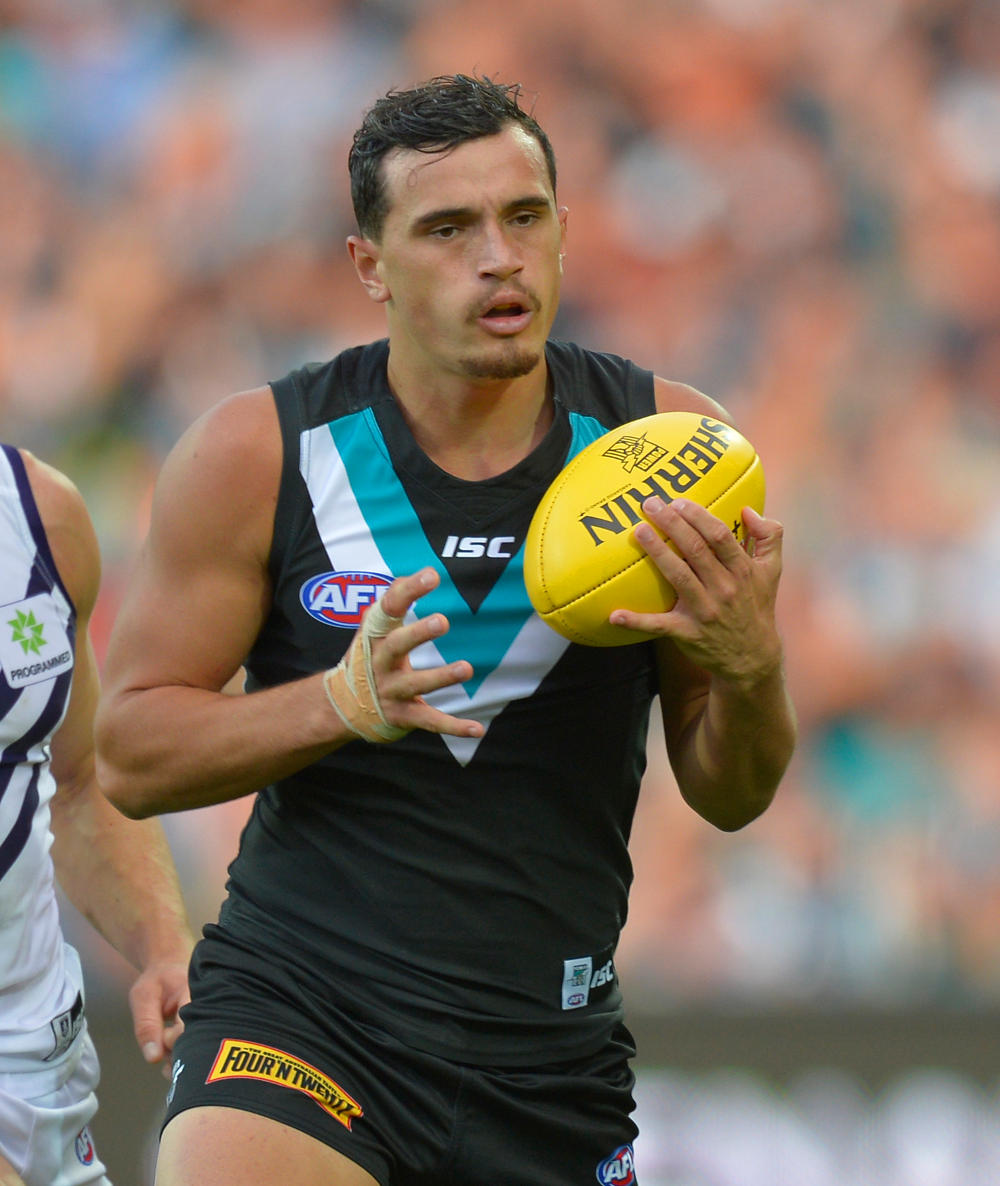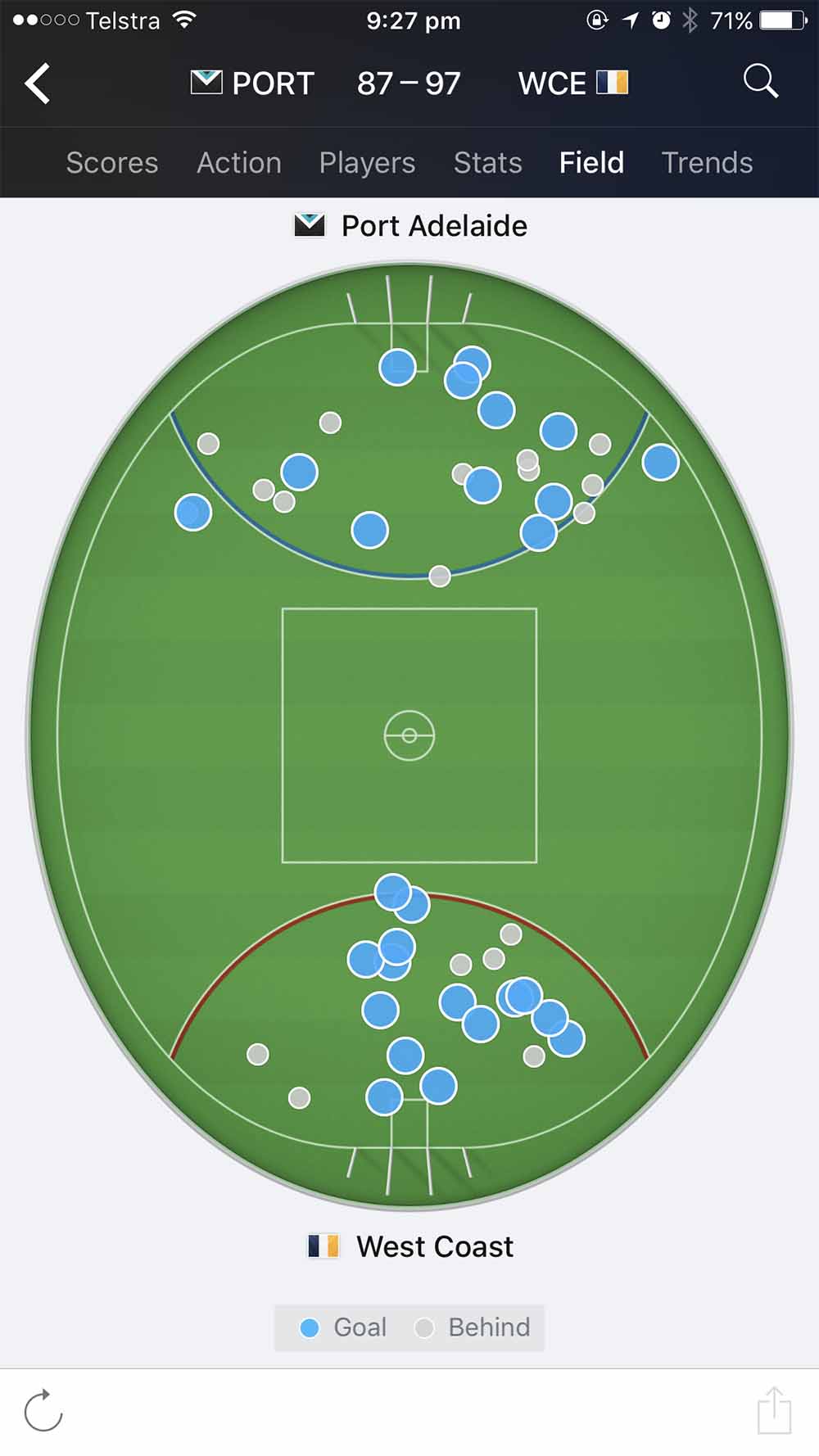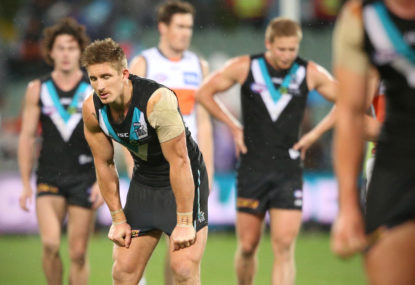A common refrain this season has been about losing teams that ‘should have won’, usually after a side has dominated inside 50 count and/or had more scoring shots, often kicking more behinds than goals.
It seems to have been happening at least once or twice each round this season.
The consensus usually is that the loser out-played the winner, but were unlucky, or just didn’t kick straight.
Often, this type of thinking is wrong. You might even call it fingernail-deep analysis.
The latest example was in the Saturday twilight fixture, between Port and West Coast.
Port won the inside 50 count 68-39. Port had the ball 71 more times, 421 to 350. Port had 27 scoring shots to 22.
West Coast won the game.
Did Port play better than West Coast? Lazy analysis would say yes. I beg to differ.
Let’s break the game into five areas where it’s important to win – the 50m arc at either end, in between the arcs, and then inside and outside ball.
The Eagles won the contested possession count, the easiest marker for who won the inside game, 156 to 146. The Power clearly had more uncontested possessions, 276 to 198, but often that can be due to chipping the ball around going nowhere, or flicking the ball around due to opposition pressure.
Most people watching would say neither applied to Port, and they won the outside battle fair-and-square. Let’s call them one-all after assessing two areas.

(AAP Image/David Mariuz)
Winning the outside game will often mean winning the battle between the arcs, which is a more subjective exercise. The inside 50 count can help us, but that can also be a build-up of repeat entries, which skews the result. Still, 68-39 is a damning win in the stat for Port, and most of them were legitimate rather than repeats. Port is up 2-1.
But now we get to making judgements about who won the battle at each end. The West Coast forwards versus the Port defenders. The Power forwards against the Eagles backs.
This is where the game was decided.
Yes, Port squandered more opportunities. But a look at the field map shows us the difficulty of some of those shots. There are very few shots from the corridor, and almost none in a circular patch 15-40m out directly in front of goal.
West Coast controlled this central corridor area in their defensive 50, through the usual suspects. Jeremy McGovern is the master intercept marker, but only took three marks on Saturday. Tom Barrass is having an outstanding season and had his best game. Elliott Yeo would be one of the first picked in an All-Australian team right now.

Shannon Hurn and Sharrod Wellingham were also excellent on the day, helping repel Port attacks.
The West Coast defenders were organised, disciplined, and are formidable when in great touch. They won their battle against the Power forwards comfortably.
At the other end of the ground, have a look at the West Coast scoring field map. You’d be hard pressed to find more shots from a central corridor, almost all of which were put through the middle.
That’s not just generating quality entries, but it also speaks of a forward-line creating space by leading when not trying to get the ball themselves, blocking, and creating opportunities for each other. In short, working together.
Josh Kennedy, Mark LeCras, Jack Darling and Josh Hill have played almost 700 games between them over a combined 42 seasons. They have been playing together for six years. They know each other. They are all also reliable kicks for goal, whether through set shots or around the corner.
Allowing the West Coast forwards so many clean shots at goal also points to a Port defence that was either lazy, off their game, or easily dissected. Whichever way you cut it, it was a decisive victory to the Eagles in that part of the ground.
So in our five area breakdown, inside ball, outside ball, the midfield, and inside the arcs at either end, West Coast win it 3-2 by my count. Winning the midfield battle does not mean winning the war. The Eagles were not outplayed. They were just outplayed in some areas.
Adam Simpson beat Ken Hinkley in the coaches box in more areas of the game, and his players executed well enough to win the match. West Coast were the superior team, and, as a result, won the game.































































































